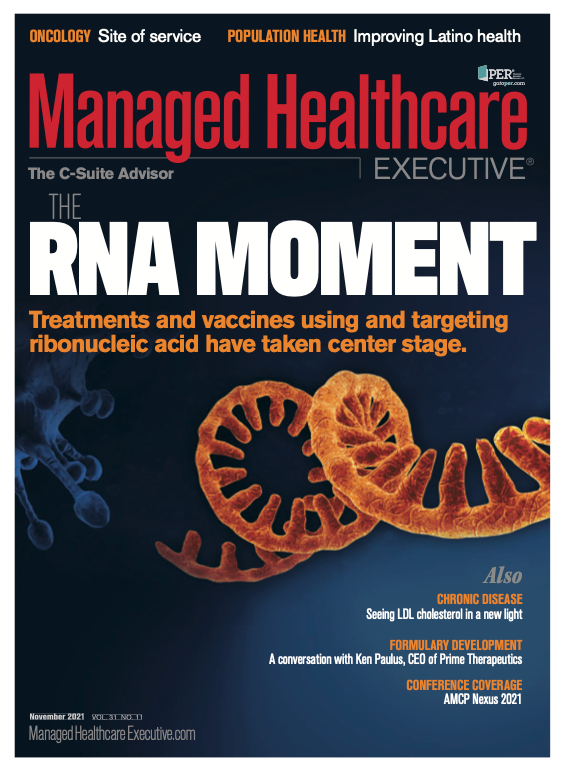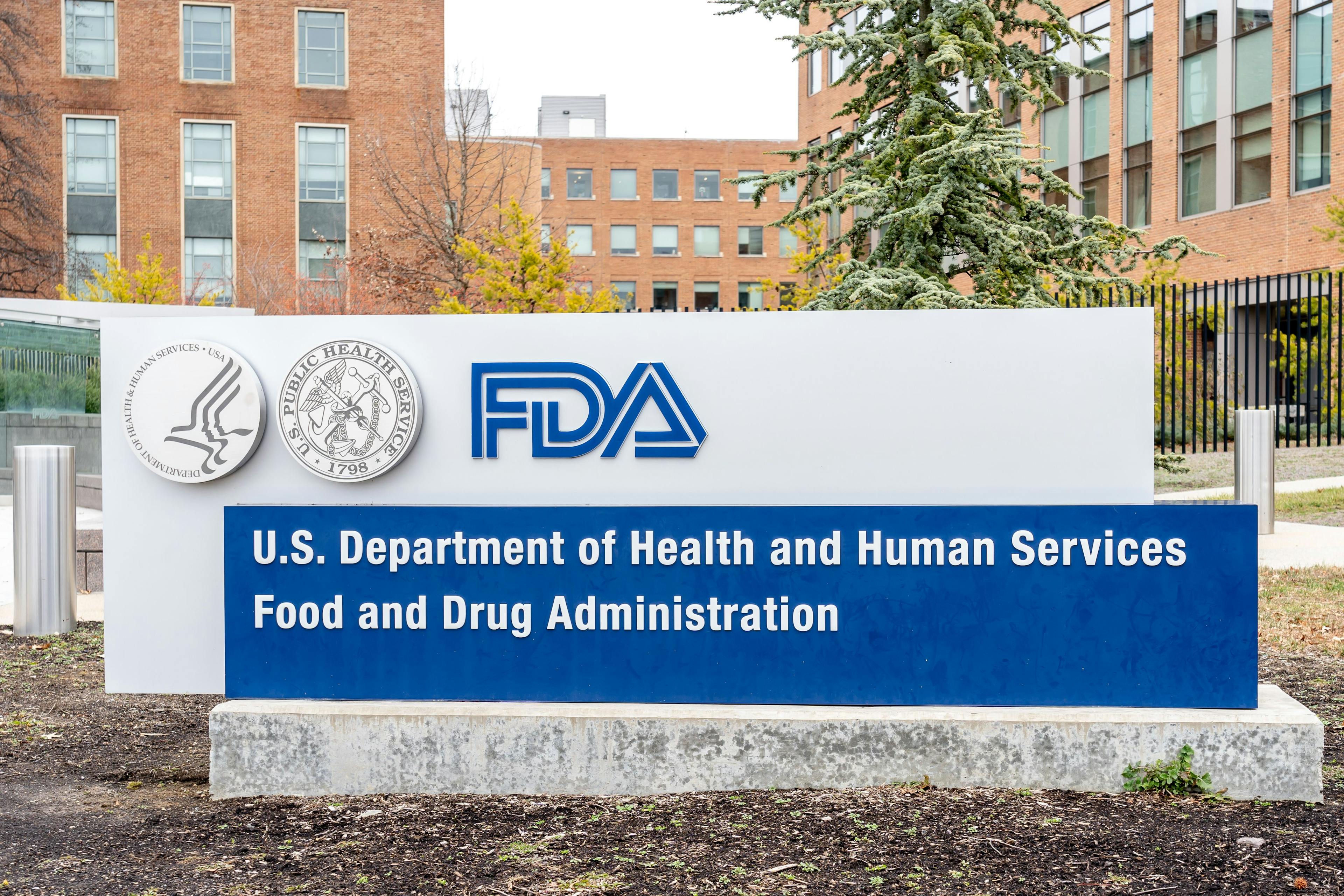The RNA Moment: Once Second to DNA are Treatments Now Filling the Drug Pipeline
The Pfizer and Moderna COVID-19 vaccines introduced much of the world to ribonucleic acid (RNA), which has long played second fiddle to DNA. But in addition to the messenger RNA vaccines, treatments targeting and using RNA in a variety of ways are filling the pipeline and exciting researchers and drug developers.
When her toddler was diagnosed with progeria in 1998, Leslie Gordon, M.D., Ph.D., faced three distinct challenges: Progeria was extremely rare. It was incurable. And most devastatingly, it was fatal.
Gordon’s son, Sam Berns, had appeared healthy at birth, but by the time he turned 2, it was clear that something was wrong. Caused by a mutation in the LMNA gene, progeria leads to rapid aging and physical changes, culminating in an early death. Not only was there no cure for progeria, but there was no treatment, no pipeline and no awareness. Nothing. “The story with rare diseases is a well-trodden one, and there was nothing out there for us,” she says.
Gordon, though, decided to fight. Her husband, her sister and she pooled their talents and set about ticking off a daunting to-do list: find children with progeria, create an international registry, launch a cell and tissue bank and raise money. The result was the Progeria Research Foundation. Sam died in 2014, but the foundation’s work continues. The FDA approved the first-ever therapy for patients with progeria, Zokinvy (lonafarnib), last year. Gordon says the approval is a breakthrough from not only a medical standpoint but also a psychological one. “It just puts us in a whole different place,” she says, “a whole different mindset.”
Yet an even more dramatic leap forward could be on the horizon. Two different research teams are working on a new strategy to fight progeria based on the idea that ribonucleic acid (RNA) can be leveraged or inhibited in ways to prevent or cure a host of diseases. The investigational therapies are part of a wave of new RNA agents that could one day reshape large portions of the therapeutic landscape. Tom Misteli, Ph.D., who directs the Center for Cancer Research at the National Cancer Institute, is working on one such investigational therapy, known as LB143. He notes that the DNA mutation underlying progeria causes defective processing of critical cellular RNA, leading to the creation of a mutant protein called progerin. By inhibiting production of the RNA coding for the defective protein, investigators hope to slow down the disease. In research findings published this past March, Misteli and colleagues showed that the strategy reduced progerin-producing RNA by 90% to 95%.
Development of another RNA-based product, led by current National Institutes of Health Director Francis S. Collins, M.D., Ph.D., is also showing early promise. In a mouse model of progeria, the agent increased survival by 60%.
RNA advantages
RNA has long lived in the shadow of DNA, famous for its sinuous double helix shape and analogized to being the genetic blueprint of all life. RNA has a less elegant single strand and is frequently depicted as being the dutiful reader of DNA, the plodding translator of its complex instructions.
But some might say that RNA is having its day. The Pfizer and Moderna COVID-19 vaccines are messenger RNA vaccines, crafted to carry instructions for the making the telltale spike protein of the SARS-CoV-2 virus that trains the immune system to recognize and attack when it next encounters a SARS-CoV-2 infection. Traditional vaccines depended on growing pathogens in cell culture. Most flu shots are still contingent on growing influenza viruses in eggs. The stunning speed at which the Pfizer and Moderna vaccines were developed has been attributed to their dependence on RNA, which with today’s technologies is relatively easy to modify and keep stable.
Treatments involving RNA are taking off and filling the drug development pipeline. Some are scraps of DNA designed to keep messenger RNA from making proteins. Others operate on RNA processes so mutated portions don’t get expressed and eventually made into aberrant, disease-causing protein.
“Superficially, it’s a no-brainer. The DNA makes the RNA. The RNA makes the proteins,” Gordon says. If the proteins are the problem, disrupting that process could lead to a resolution — in theory. “Then, when you get into it, science is always more complicated,” she says.
Phillip D. Zamore, Ph.D., a pioneer in RNA therapies and chair of the RNA Therapeutics Institute at the University of Massachusetts, said RNA therapies represent a novel way of thinking about stopping diseases. Traditionally, small-molecule drugs target the enzymatic activity of proteins. “All of those are old-fashioned drugs, in the sense that they require searching through huge libraries of compounds to fortuitously find a lead compound that your medicinal chemists could turn into a drug,” he says.
Next-generation RNA therapies create a new opportunity to disrupt the transfer of information within cells, thereby interfering with the process underlying the target disease. Misteli says RNA makes the best target within the DNA-to-RNA protein relay. He notes that genetic information is permanently encoded in DNA, but changing the underlying genetic code carries risk and could lead to unintended consequences. Another option is interfering with proteins, but that solution is not particularly efficient, he says. RNA, on the other hand, provides a meaningful target without the risks of DNA alteration. “Targeting RNA offers the benefit of eliminating the effect of a mutation close to the source yet without a permanent change to the hereditary information,” he says.
Zamore identifies two key turning points that helped transform RNA-targeting therapies from an idea into a reality. The first was the discovery that antisense oligonucleotides (also called antisense oligos) could interfere with RNA splicing, an intermediate step in the formation of messenger RNA. That led to the development of the first RNA therapy, Vitravene fomivirsen), which the FDA approved in 1998 as a treatment for patients with cytomegalovirus retinitis, a vision-threatening disease most commonly known as a complication of HIV/AIDS at the time. However, antisense oligos never worked all that well in suppressing messenger RNA expression, Zamore says, limiting their usefulness. I
nstead, one more step was necessary, the discovery that double-stranded small interfering RNA (siRNA) could be used to interfere with RNA or RNA interference (RNAi). The understanding of RNAi gives scientists the power to “silence” gene expression toward therapeutic ends, and siRNA is one type of RNA molecule used to achieve RNAi. “The real revolution was the discovery that you could make synthetic siRNAs and use them to destroy messenger RNA,” he says. The scientists credited with discovering RNA interference, Andrew Z. Fire, Ph.D., and Craig C. Mello, Ph.D., won the Nobel Prize in 2006.
A dozen years later, the FDA approved Onpattro (patisiran), an siRNA drug, as a treatment for patients with hereditary transthyretin-mediated amyloidosis. The drug was developed by Alnylam Pharmaceuticals. Zamore was a founder of the company, though he no longer works for or consults for Alnylam.
Some RNA therapies work further downstream. RNA aptamers are sticky pieces of RNA that cling to disease-causing proteins. One example is Macugen (pegaptanib), an anti-vascular endothelial growth factor drug used to treat patients with ocular vascular disease.
Clearing hurdles
Although there was some early skepticism, plenty of people have been hard at work developing RNA drugs. A 2020 article in Nature counted more than 400 RNA therapeutics, including vaccines, in development pipelines. Most, though, are at early stages of development. Only 3% were in phase 3 trials, and only a handful were awaiting regulatory decisions.
Even as investigators have made progress, Misteli said two persistent problems have perplexed scientists: making sure RNA therapeutics are stable and finding effective means of delivering them to the right place. “The major obstacles at this point are delivery of the RNA agents as well as their stability in cells and tissues as they are relatively rapidly degraded,” he says.
But Zamore says the Pfizer and Moderna vaccines show that subcutaneous administration of RNA therapies can be successful. Earlier therapies, such as Onpattro, required administration by infusion. If the delivery question can be solved, and if the administration route can be simplified, Zamore says RNA therapies could match or even surpass small-molecule drugs, in part because RNA therapeutics’ effects are long lasting. Rather than hoping a patient remembers to take a small-molecule drug every day, physicians might someday be able to prescribe a once-yearly shot.
Zamore also believes RNA therapies will eventually compete with small-molecule drugs on price. The high price tags on the current crop of therapies for the most part are due to generating a return on investment rather than the cost of the goods, he says. As the investment pays off and the techniques for RNA therapies improve, the cost of developing the drugs will drop, Zamore predicts.
The potential of RNA therapies is more about platforms than specific proprietary products, in Zamore’s opinion. Rather than working on a single small molecule whose applicability may be limited to a single disease, RNA therapy platforms can be leveraged to rapidly develop products for any number of diseases, he says.
That’s a particularly good situation for people like Gordon who have devoted themselves to fighting rare diseases. It means she does not need to rely on persuading a drug company to spend billions of dollars working on progeria, a disease that affects just 1 in 20 million children. Instead, her cause can benefit from RNA therapy research aimed at entirely different disease categories. Gordon says she’s willing to talk and work with anyone who has insights that might help develop new therapies for progeria. “I just want to cure this thing,” she says.
Jared Kaltwasser is a freelance writer in Iowa.

Doug Chaet of Value Evolutions Discusses Value-based Payment Models, Where They Stand and More
September 29th 2022In this episode of Tuning In to the C-Suite, Managing Editor of Managed Healthcare Executive, Peter Wehrwein, speaks with President of Value Evolutions and MHE Editorial Advisory Board Member, Doug Chaet, FACHE, about value-based care's current standing, the status of select payment models like bundled and episodic, and more.
Listen
We conducted our annual State of the Industry survey in the early part of November 2023. The survey had 432 respondents, of whom 56% self-reported working for a payer organization (pharmacy benefit manager, insurer or self-insured employer), 34% for a provider organization and the remainder for government or an unspecified “other” category.
Read More
Parity for Mental Health — Any Progress?
October 12th 2023Laws since 1996 have sought to assure that coverage of behavioral health treatments does not take a back seat to physical medicine. Amid a national crisis in mental illness and addiction, that new world of equality has not arrived. But is it on the way?
Read More




















